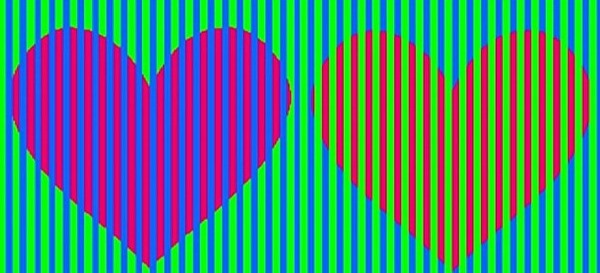If you recall the viral garment from a year ago (white or purple, the debate continues today), which divided Internet users into two camps, now we have a fresh illusion for you unique optics. This is what it’s all about!
Take a look at the photo above, then scroll down to the detail. What colors do the two hearts appear to be?

You were incorrect if you responded dark pink/purple and red/orange.
The Reality of the Optical Illusion
Surprise! Both are the same light pink color. Is that even possible?
“This snapshot fools our brains and makes them think they see something that doesn’t really exist,” says the developer of this optical illusion, one of the founders of the Bite-Size Psych YouTube channel dedicated to psychology. This effect is created using colored vertical lines. The lines are not all the same color, and there are two shades of pink in combination with the pink of the hearts. As a result, our brain is no longer able to recognize the original color of hearts. If we look at the colored lines, we can see that the hearts are all pink.

Because we’re working with blue and green lines, the colors of the hearts shift based on the hues around them. This indicates that the color we see in our daily lives is a function of the overlap of that object with those in its immediate vicinity, rather than the color we sense.
What Causes Optical Illusions?
What is the definition of an optical illusion? Optical illusions, often known as visual illusions, are a type of visual trickery. A wide range of misleading visual illusions can be noticed due to the arrangement of images, the effect of colors, the impact of the light sources, or other variables.
You may have noticed that not everyone experiences visual illusions in the same way if you’ve ever struggled to see the hidden picture in a single-image stereogram. Such folks are just unable to see the effect of some illusions.
While optical illusions are entertaining and fascinating, they also tell a lot about how the brain works. Learn more about some of the most well-known optical illusions and how and why they occur.
Color, light, and patterns can be used to produce optical illusions that deceive or mislead our minds. The brain processes the information gathered by the eye, resulting in a perception that does not match the true image. The interpretation of what we see with our eyes is referred to as perception. Our brain tries to interpret what we see and make sense of the world around us, which leads to optical illusions. Optical illusions only deceive our brains into seeing things that aren’t necessarily real.
